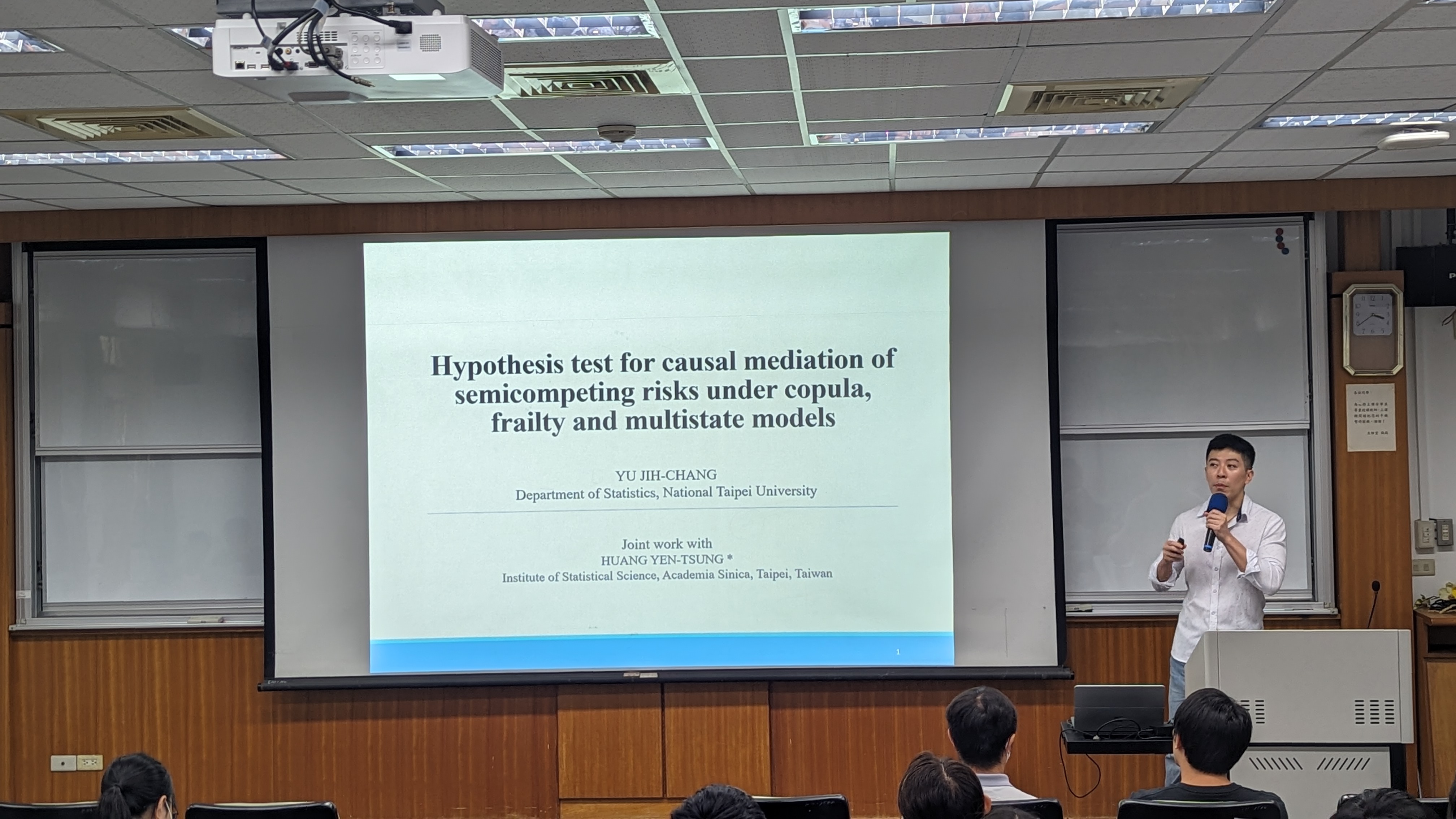【專題演講】113/05/16(四) 15:30-16:30 Prof. Jih-Chang Yu(余日彰 教授)
Abstract
Semicompeting risks problem concerns two time-to-event outcomes where the intermediate outcome may be censored by the terminal outcome but not vice versa. Huang’s 2010 has shown that the semicompeting risks can be formulated as a mediation model where a direct effect (DE), the effect of an exposure on the terminal outcome not through the intermediate outcome, and an indirect effect (IE), the effect on the terminal outcome mediated by the intermediate outcome, are studied. In this article, we propose testing procedures to evaluate the DE and IE under three classic semicompeting risks models: Clayton copula model, gamma frailty model, and multistate model. We study the correspondence of the DE and IE with the model parameters and establish testing rules for the two effects under the three models. We use the U-statistic approach for the Clayton copula model and nonparametric maximum likelihood estimation for the multistate and gamma frailty models for statistical inference. The simulation study shows that among the three models, the Clayton copula model attains the best statistical power if the model assumption holds, but has the potential bias caused by model misspecification; the gamma frailty model is the most robust model by sacrificing the efficiency; the multistate model balances the efficiency and robustness. We apply the proposed method to a hepatitis study, and the aforementioned models unanimously suggest that both hepatitis B and C lead to a higher incidence of liver cancer by increasing liver cirrhosis incidence.



